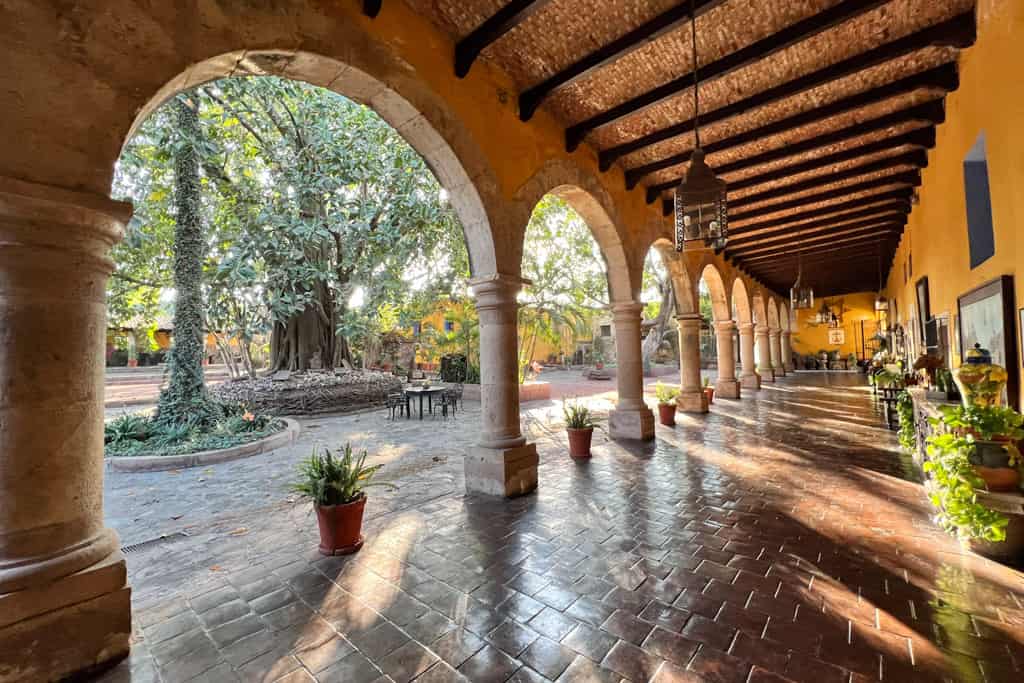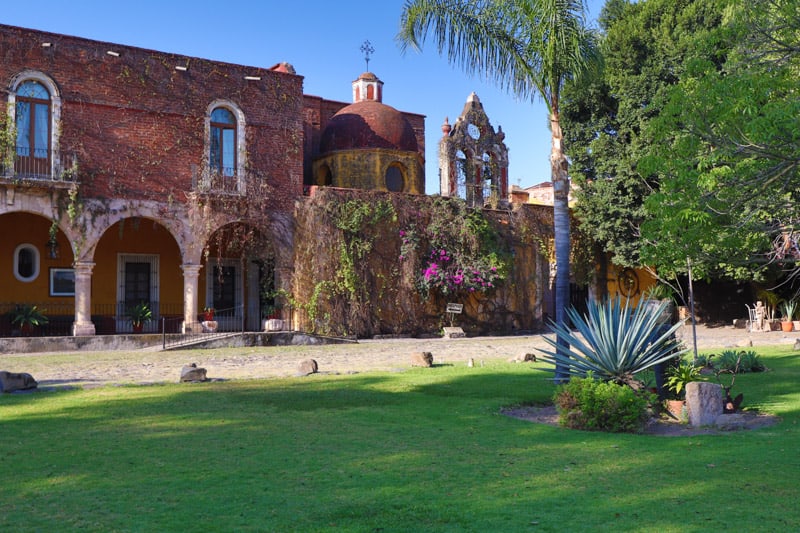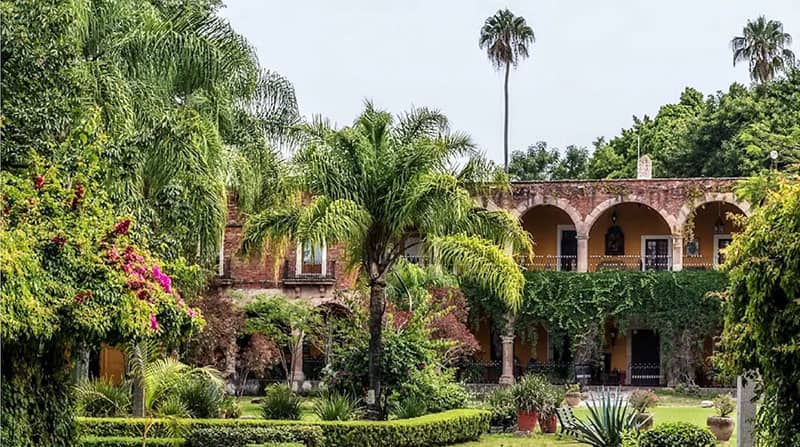Do you ever wonder what makes Mexico’s haciendas so captivating? Well, get ready because in this article, we’re going to delve into the timeless charm of Mexico’s haciendas and uncover what makes them so unique. From their rich history to their stunning architecture, there’s so much to discover about these enchanting properties.
When you think of Mexico, what comes to mind? Maybe it’s the vibrant culture, the delicious food, or the stunning beaches. But Mexico is also home to a wealth of historic haciendas that hold centuries of stories within their walls. These haciendas were once the heart of Mexico’s flourishing agricultural industry, and today, they stand as a testament to the country’s rich heritage.
One of the most intriguing aspects of these haciendas is their architecture. From the moment you set foot on the grounds, you’ll be transported to a bygone era. The grand courtyards, ornate detailing, and traditional Mexican design elements create a sense of elegance and beauty that is truly awe-inspiring. And the best part is, many haciendas have been lovingly restored and transformed into luxurious hotels, allowing visitors to experience the charm of the past while indulging in modern comforts.
In this article, we’ll take a closer look at the history of Mexico’s haciendas, explore some of the most popular ones to visit, and give you a taste of the incredible experiences you can have during your stay. So, get ready to fall in love with Mexico’s haciendas and all the beauty and charm they have to offer. Stay tuned for more!

The Origins of Haciendas in Mexico
The Influence of Spanish Colonialism on Haciendas
The history of Mexico’s haciendas dates back to the period of Spanish colonialism in the 16th century. When the Spanish arrived in Mexico, they brought with them a system of large agricultural estates known as haciendas. These haciendas played a significant role in the economic and social structure of Mexico for centuries to come.
The Spanish colonizers saw the potential of the fertile land in Mexico and sought to exploit it for agricultural purposes. They established haciendas as centers of production, with vast tracts of land dedicated to growing crops such as sugar cane, maize, and coffee. The Spanish lords, known as hacendados, ruled over these lands and profited greatly from the labor of Indigenous and African slaves.
The Transformation of Indigenous Lands into Haciendas
Many of the haciendas in Mexico were established on lands that were previously owned by Indigenous communities. The Spanish forced these communities to abandon their traditional farming practices and work on the haciendas instead. This displacement of Indigenous people and the seizure of their lands contributed to a long-lasting legacy of social and economic inequalities in Mexico.
The Role of Haciendas in Mexican History
The Impact of Haciendas on Mexico’s Economy
Haciendas played a crucial role in shaping Mexico’s economy throughout history. The agricultural production on these estates contributed significantly to the country’s wealth and prosperity. The crops grown on haciendas were not only consumed domestically but also exported to other countries, generating substantial profits for the hacendados.
Haciendas as Centers of Power and Wealth
The haciendas were not only economic powerhouses but also served as centers of political and social influence. The hacendados, as the owners of these vast estates, held considerable political power and often held high positions within the colonial administration. This concentration of power and wealth in the hands of a few contributed to social and class hierarchies in Mexican society.
The Hacienda System and Social Inequality
The hacienda system perpetuated social inequality in Mexico. The Indigenous and African laborers who worked on these estates were often subjected to harsh conditions and exploitative practices. They were not only denied basic rights but also forced to work long hours for very little pay. This system of indentured labor created a deep divide between the wealthy hacendados and the impoverished working class.

The Architectural Significance of Haciendas
The Distinctive Architectural Features of Haciendas
One of the defining characteristics of haciendas is their unique architectural style. Haciendas typically feature large courtyards, known as patios, surrounded by adobe or stone walls. The main house, known as the casa principal, is the focal point of the hacienda and often showcases intricate woodwork, colorful tiles, and grand arches. These architectural elements reflect a blend of Indigenous and European design influences.
The Integration of Indigenous and European Design Elements in Haciendas
The architecture of haciendas is a testament to the cultural fusion that occurred during the colonial period. Spanish colonizers incorporated elements of their own architectural styles, such as Baroque and Moorish influences, while also incorporating Indigenous design elements. This integration of different architectural traditions resulted in a unique and distinct style that is emblematic of Mexico’s colonial past.
Notable Examples of Hacienda Architecture
Mexico is home to numerous haciendas that showcase remarkable architecture. Hacienda San Antonio Chicharras, located in Jalisco, is renowned for its intricately carved wooden doors and its elegant courtyard adorned with colorful tiles. Hacienda Santa Rosa in Yucatan is another notable example, featuring colonial-era architecture and beautifully preserved gardens. These haciendas provide visitors with an opportunity to step back in time and admire the architectural splendor of Mexico’s colonial past.
The Economic Importance of Haciendas in Mexico
The Production of Agriculture and Livestock on Haciendas
Haciendas played a crucial role in Mexico’s agricultural sector. The vast expanses of land that were dedicated to agriculture allowed for the cultivation of a wide variety of crops. These included sugarcane, coffee, cacao, and various fruits and vegetables. Haciendas also played a significant role in livestock production, with cattle, sheep, and horses being raised on these estates.
The Role of Haciendas in Mexico’s Export Industry
The agricultural products and livestock produced on haciendas formed a key component of Mexico’s export industry. The abundant harvests of crops and the quality livestock were highly sought after in international markets. Exporting these goods not only generated substantial income for the haciendas but also contributed to Mexico’s overall economic growth.
The Impact of Haciendas on the Local Economy
The presence of haciendas had a profound effect on the local economies in which they were located. The agricultural and livestock production on these estates created employment opportunities for local communities. The infusion of wealth from the haciendas also stimulated trade and commerce in nearby towns, contributing to their development and prosperity.

Haciendas as Tourism Destinations in Mexico
The Transformation of Haciendas for Touristic Purposes
In recent years, many haciendas in Mexico have been transformed into tourist destinations. These haciendas have been renovated and restored to their former glory, offering visitors a glimpse into Mexico’s rich historical past. Today, travelers can experience the timeless charm of these estates by staying in converted hotels, exploring their grounds, and learning about their unique stories.
The Appeal of Haciendas to Travelers
Haciendas hold immense appeal for travelers seeking an authentic and immersive cultural experience. Staying at a hacienda allows visitors to step back in time and experience the grandeur and opulence of Mexico’s colonial era. The tranquil settings, beautiful architecture, and lush landscapes provide a picturesque backdrop for a memorable vacation.
Experiencing Traditional Mexican Culture at Haciendas
Haciendas offer travelers a chance to immerse themselves in traditional Mexican culture. Many haciendas organize cultural activities such as traditional music and dance performances, cooking classes, and craft workshops. Visitors can also indulge in traditional Mexican cuisine prepared using local ingredients, providing a sensory journey through Mexico’s culinary heritage.
Preserving Mexico’s Haciendas
Efforts to Protect and Restore Haciendas
Preserving Mexico’s haciendas has become a priority for the government and various conservation organizations. Efforts have been made to restore these estates to their former glory, ensuring that their architectural features and cultural significance are preserved for future generations. These restoration projects involve careful research, craftsmanship, and attention to detail to maintain the authenticity of the haciendas.
The Importance of Hacienda Preservation for Cultural Heritage
The preservation of haciendas is essential for safeguarding Mexico’s cultural heritage. These estates serve as tangible reminders of Mexico’s colonial past and the complex social and economic systems that shaped the country. By protecting and showcasing haciendas, Mexico can celebrate its unique history and promote a deeper understanding of its cultural identity.

Haciendas as Wedding and Event Venues
The Allure of Haciendas as Wedding Destinations
Haciendas have become increasingly popular as wedding venues in recent years. The timeless charm, picturesque settings, and romantic atmosphere of these estates provide the perfect backdrop for a memorable wedding celebration. The grand architecture, lush gardens, and elegant courtyards offer a fairy-tale ambiance that will enchant couples and their guests.
Hosting Memorable Events at Haciendas
In addition to weddings, haciendas are also ideal venues for other special events, such as corporate retreats, family reunions, and milestone celebrations. The combination of historical ambiance and modern amenities makes haciendas the perfect choice for hosting unique and memorable gatherings. The personalized service and attention to detail provided by hacienda staff ensure that every event is executed flawlessly.
Haciendas and Sustainable Tourism
Promoting Sustainable Practices at Haciendas
With the rise of sustainable tourism, many haciendas in Mexico are implementing eco-friendly practices. These include using renewable energy sources, conserving water, and practicing responsible waste management. By adopting sustainable practices, haciendas contribute to the preservation of Mexico’s natural resources and promote the concept of responsible travel.
Empowering Local Communities through Hacienda Tourism
Hacienda tourism provides opportunities for local communities to participate in and benefit from the tourism industry. Many haciendas collaborate with nearby communities, employing locals as staff, sourcing products from local artisans and farmers, and supporting community development initiatives. This partnership between haciendas and local communities helps to empower and uplift these marginalized groups.

Visiting Haciendas in Mexico
Planning a Hacienda Tour in Mexico
When visiting Mexico, adding a hacienda tour to your itinerary is a must. There are numerous haciendas throughout the country, each offering a unique experience. Research the different haciendas, their locations, and the activities they offer to plan a tour that suits your interests and preferences. Whether you want to relax by a swimming pool, explore ancient ruins, or indulge in gourmet dining, there is a hacienda that caters to your desires.
Exploring the Beautiful Surroundings of Haciendas
Haciendas are often located amidst stunning natural landscapes, allowing visitors to explore the beauty of Mexico’s flora and fauna. Many haciendas offer guided nature walks, horseback riding excursions, or even hot air balloon rides to showcase the breathtaking surroundings. Immerse yourself in the natural splendor of Mexico’s countryside while staying at a hacienda.
Immersing in the Rich History of Haciendas
Visiting haciendas provides a unique opportunity to learn about the rich history of Mexico. Explore the historical significance of each hacienda, visit nearby museums or archaeological sites, and engage with knowledgeable guides who can take you on a journey through time. By immersing yourself in the historical narratives of haciendas, you can gain a deeper understanding of Mexico’s cultural heritage.
The Cultural Significance of Haciendas
Haciendas as Symbolic Representations of Mexican Identity
Haciendas hold immense cultural significance for the Mexican people. They represent a distinct period in Mexican history when Indigenous, Spanish, and African cultures intertwined to shape the country’s identity. The architectural styles, traditions, and way of life associated with haciendas have become integral components of Mexico’s cultural fabric.
The Influence of Haciendas on Mexican Cuisine and Music
The culinary traditions of Mexico owe much to the haciendas. The agricultural production on these estates introduced crops such as maize, cacao, and chili peppers to Mexican cuisine. These staple ingredients form the foundation of many traditional Mexican dishes. Haciendas also became nurturing grounds for folk music and dance, shaping the sounds and rhythms that are now synonymous with Mexican culture.
Haciendas and the Arts
Inspiring Artists and Writers through Haciendas
Haciendas have long been a source of inspiration for artists and writers. The enchanting beauty, rich history, and cultural significance of these estates have captivated the creative minds of many. Artists, photographers, and writers have sought solace and inspiration within the walls of haciendas, creating works that celebrate Mexico’s heritage and its timeless charm.
Haciendas in Mexican Literature and Art
Haciendas have served as settings and themes in numerous works of Mexican literature and art. Renowned authors such as Octavio Paz and Carlos Fuentes have depicted the life and struggles of hacienda laborers in their novels, shedding light on the social injustices that prevailed during the hacienda era. Artists, too, have incorporated hacienda imagery into their paintings, showcasing the beauty and cultural significance of these iconic structures.
Haciendas and Ecotourism
Discovering Mexico’s Natural Beauty through Haciendas
Haciendas serve as gateways to Mexico’s natural wonders, allowing visitors to discover the country’s breathtaking landscapes. Many haciendas are located in close proximity to nature reserves, national parks, and natural landmarks. Visitors can embark on eco-tours, hiking expeditions, or bird-watching excursions, immersing themselves in the diverse ecosystems that Mexico has to offer.
The Connection between Haciendas and Nature Conservation
Haciendas and nature conservation go hand in hand. Many haciendas have taken steps to protect and preserve the natural surroundings in which they are situated. By implementing sustainable practices, supporting local nature conservation initiatives, and educating visitors about the importance of environmental stewardship, haciendas play a vital role in the preservation of Mexico’s natural heritage.
Conclusion
Mexico’s haciendas embody a timeless charm and represent a significant chapter in the country’s history. From their colonial origins and economic importance to their architectural splendor and cultural significance, haciendas offer a captivating journey into Mexico’s past. Today, these estates continue to thrive as tourism destinations, inviting visitors to not only explore their beautiful settings but also delve into the rich tapestry of Mexico’s cultural heritage. By uncovering the allure and legacy of Mexico’s haciendas, you can embark on a journey that intertwines history, culture, and natural beauty, leaving you with a deeper appreciation for the multifaceted heritage of this enchanting country.